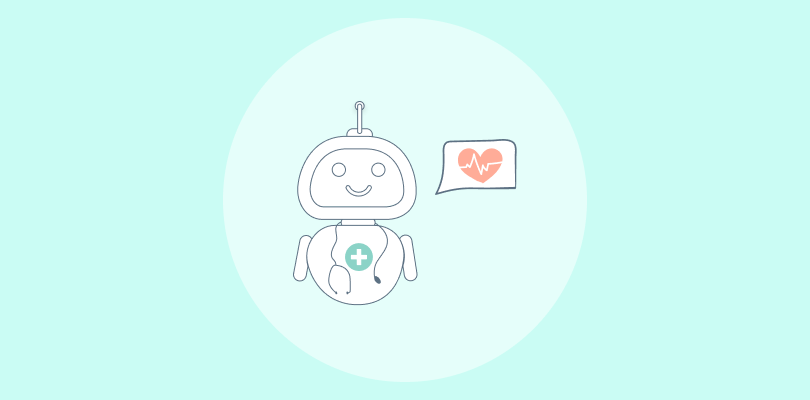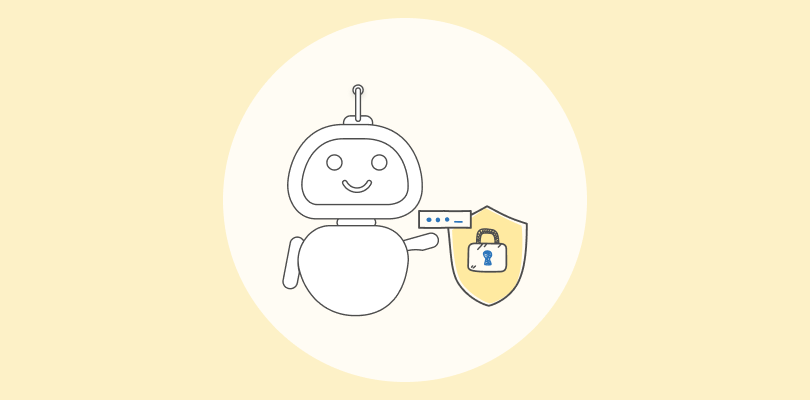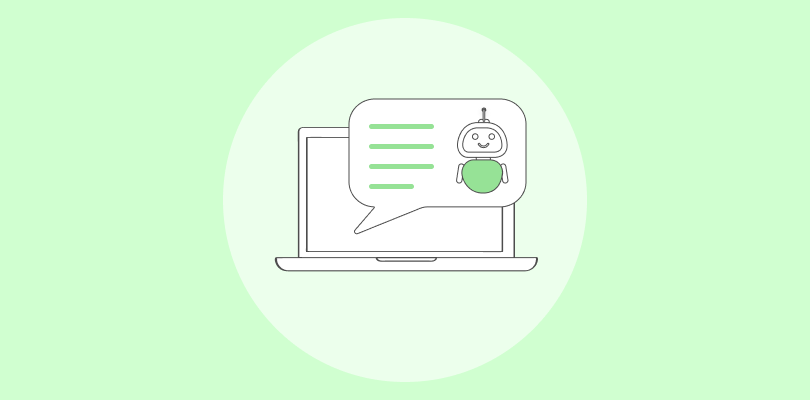Are you looking for a way to engage your website visitors and convert them into leads or customers? Do you want to improve your customer service and provide 24/7 support to your customers? If yes, then chatbot marketing is the solution for you.
With the right setup, chatbots can provide personalized product recommendations, answer frequently asked questions, and even assist customers with making purchases directly from the chat window. By streamlining the customer journey, chatbots help reduce frustration and increase customer satisfaction.
But creating an effective chatbot marketing strategy requires expertise and finesse. That’s where we come in. This blog will help you master the art of chatbot marketing and take your business to the next level.
Let’s get started.
What Are Chatbots?
Chatbots are computer programs that simulate human conversations using natural language processing (NLP) and machine learning algorithms. They can be integrated into messaging apps, websites, and social media platforms to provide automated customer support and marketing assistance.
They are designed to provide quick and efficient responses to customer inquiries, reducing the workload of customer service teams and improving customer satisfaction.
What Is Chatbot Marketing?
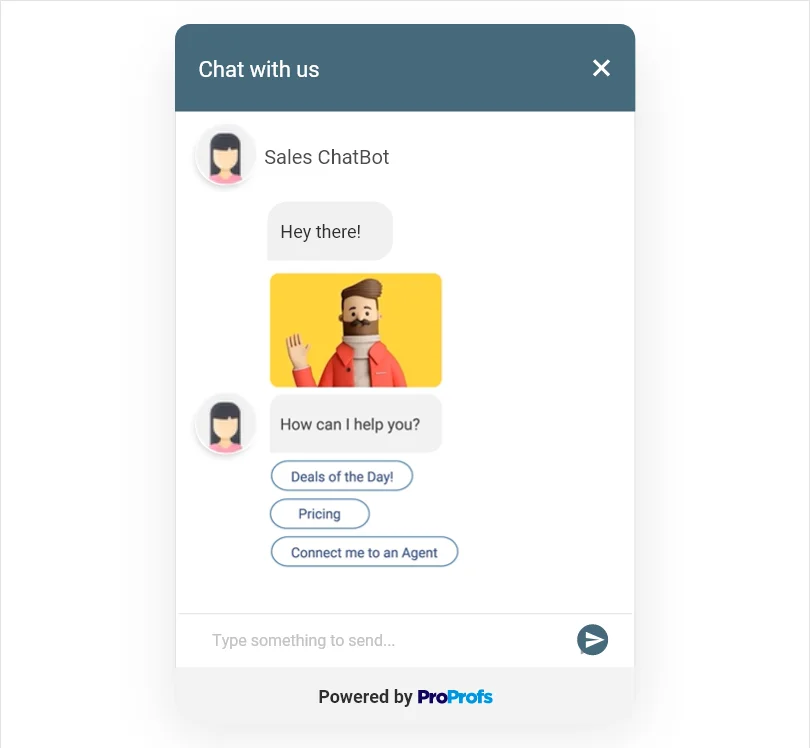
Chatbot marketing refers to using chatbots to improve marketing efforts, such as lead generation, customer engagement, and sales. Chatbots can assist in various marketing tasks, such as answering product-related questions, providing recommendations, and guiding customers through the sales funnel.
By automating these tasks, chatbots can save time and resources for businesses while providing a seamless customer experience.
Here are some examples of business using chatbots for marketing:
- Sephora, a cosmetic retailer, uses a chatbot on its website and Facebook Messenger. It provides personalized recommendations to customers based on their skin type, preferences, and purchase history.
- H&M, a fashion retailer, which uses a chatbot on Kik to promote its latest collections and engage with customers.
What Can a Chatbot Help You With?
Chatbots are used for a variety of purposes, including customer service, sales, and marketing. Here are some of the ways a chatbot can help you:
1. Automating Customer Service
Chatbots can answer common customer questions and provide support 24/7, freeing up human customer service agents to focus on more complex issues. By automating simple tasks, businesses can improve response times and provide faster resolution to customer issues. Chatbots can also be programmed to escalate issues to a human agent if necessary.
2. Providing Personalized Recommendations
They can use data such as past purchases and browsing history to recommend relevant products and services to each customer. By providing personalized recommendations, businesses can increase customer engagement and drive sales.
3. Streamlining Sales
Chatbots can help customers make purchases directly through the chat interface, making the buying process more convenient. By allowing customers to complete purchases within the chat interface, businesses can reduce friction in the sales process and increase conversions.
4. Generating Leads
They can help capture customer information and qualify leads for sales teams. By asking targeted questions and gathering information about customers, chatbots can help businesses identify potential leads and provide them with relevant information about products and services.
In addition to these benefits, chatbots can collect valuable customer data. They can gather insights into customer preferences, behavior, and pain points by analyzing customer interactions. This data can then be used to improve marketing strategies, create better products, and personalize customer experiences.
Read Also: 10 Best Free Chatbots to Boost Your ROI in 2025
Different Types of Chatbots: Which Is Best for You?
There are several types of chatbots, each with its own unique features and benefits. Here are the most common types of chatbots:
- Rule-based chatbots: These chatbots follow pre-programmed rules and can only respond to specific commands or keywords. They’re best suited for simple tasks such as answering FAQs or providing basic information.
- AI-powered chatbots: These chatbots use natural language processing and machine learning algorithms to understand and respond to customer inquiries. They’re more versatile than rule-based chatbots and can handle more complex tasks.
- Hybrid chatbots: These chatbots combine rule-based and AI-powered approaches, providing the best of both worlds. They can handle both simple and complex tasks and can be customized to meet specific business needs.
For businesses that require simple and straightforward interactions with customers, such as answering frequently asked questions, rule-based chatbots may be the most cost-effective solution. However, AI-powered chatbots may be a good option for businesses that need to handle complex customer queries.
A hybrid chatbot may be the best option for businesses that require a combination of both simplicity and complexity in their customer interactions. Ultimately, the best type of chatbot for your business will depend on your specific requirements and the nature of your customer interactions.
Read More: A Detailed Guide To Types Of Chatbot And Why You Must Have Them Today!
FREE. All Features. FOREVER!
Try our Forever FREE account with all premium features!
How to Use Chatbots for Marketing?
Chatbots have become an increasingly popular tool for businesses looking to improve their marketing efforts. These automated messaging tools can help brands engage with customers, provide personalized experiences, and generate leads. This section will explore some of the best practices for using chatbots in your marketing strategy.
1. Define Your Objectives
Before implementing a chatbot, it’s essential to define your objectives. What do you hope to achieve with your chatbot? Do you want to drive more sales, increase customer engagement, or provide a better customer service experience? Defining your goals will help you choose the right chatbot platform, create the right messaging, and measure the success of your chatbot.
2. Choose the Right Chatbot Platform
Choosing the right chatbot platform is crucial for your marketing success. Many options are available, including Facebook Messenger, WhatsApp, and Slack. Consider your target audience, the platforms they use, and the functionality you require. Some chatbot platforms allow you to integrate with other marketing tools like email marketing or CRM systems, which can help you streamline your marketing efforts.
3. Personalize Your Messaging
Chatbots are a great way to provide personalized experiences to your customers. Use data you have on your customers, such as their location, purchase history, or browsing behavior, to personalize your messaging. This can help improve customer engagement and satisfaction.
4. Be Proactive
Don’t wait for customers to start the conversation. Use your chatbot to proactively engage customers and guide them through their journey. For example, if a customer abandons their shopping cart, you can use a chatbot to follow up and offer a discount to encourage them to complete their purchase.
5. Measure Your Success
As with any marketing effort, it’s crucial to measure your chatbot’s success. Use analytics tools to track engagement rates, conversion rates, and other key performance indicators. Use this data to optimize your chatbot and improve its effectiveness over time.
Chatbot Marketing Examples
Industries are considering chatbots for marketing and have successfully implemented them in their business process. Here are a few examples that’ll help you understand their possible use.
1. Hospitality
Chatbots aren’t new to the hospitality sector, and Marriott is one of the finest examples in this case. Marriott offers its chatbot to help customers manage their reward points, find the best resort deals, and make reservations to their properties in seconds.
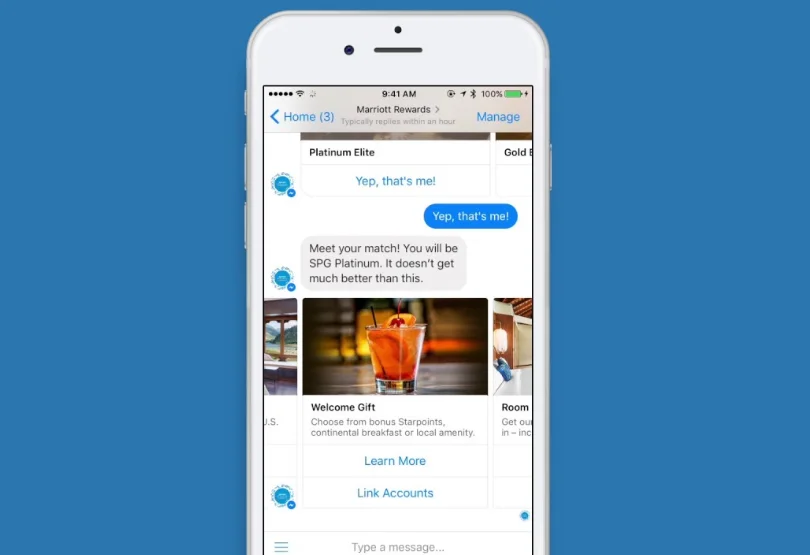
Besides booking, it even updates customers about the latest room deals and how they can be availed. Customers can also update their memberships and gain better discounts on their stays at Marriott hotels.
2. Restaurant
From booking reservations to taking orders for takeaway, chatbots have helped restaurants manage customer requests. A chatbot by Nitro Cafe Coffee & Tea helps them manage their customers and reservation requests with ease.
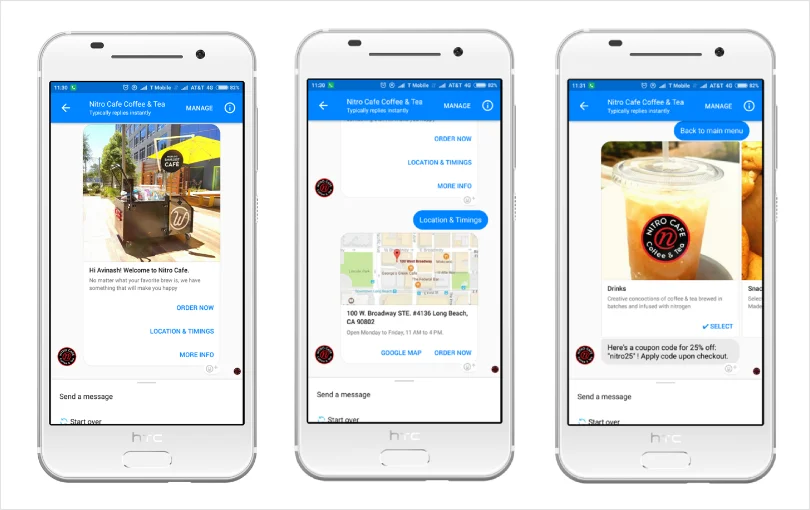
Users can order their takeaways, ask directions for dining, and do much more with the help of their chatbot. It even promotes the latest additions to their menu and offers special discounts to market them among their buyers.
3. eCommerce
Multiple brands use chatbots for marketing their products and selling them at the same time. Burberry is one of them.
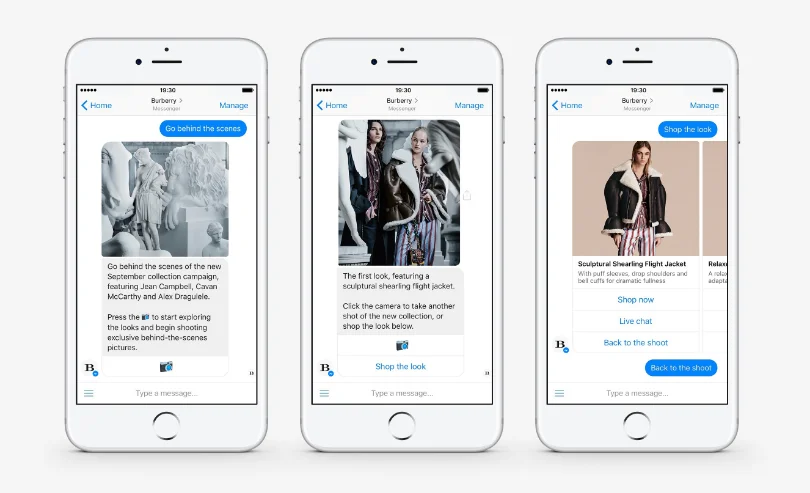
This clothing brand first took to online shopping and later on added a chatbot to help their customers find the perfect look for them. It recommends popular clothing lineups from its collection. The chatbot will show more options in case the customer wishes to see more options.
3. Human Resources
Help your HR identify better candidates for your business with a marketing chatbot. They can assist your human resource team in connecting with candidates and gathering more information without getting involved. However, that’s not the only use case for an HR bot.
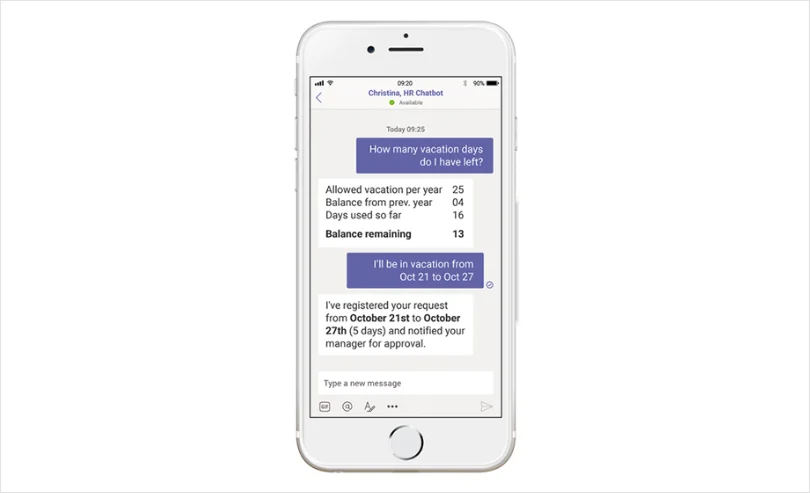
Some chatbots can be used for internal purposes as well. Many businesses might have an internal system to manage and track leaves or holidays for a month. Chatbots can very well replace them and help your employees keep track of their leaves in no time. These chatbots can also help your employees apply for leaves and send notifications to other team members who can look after their work.
5. Airlines
From offering flight information to booking one with your favorite seats, chatbots today handle flight management activities. There was a time when we went to the airport to book the tickets. Later, the agents came in who used to book the tickets for us. Then came the websites for each airline that helped people book tickets without having any middle man in the process.
Let’s not forget travel sites like Skyscanner that offer competitive flight rates for you. However, chatbots have become the latest addition to the list of platforms that help you book a flight for your journey.
KLM is one of the finest examples in this case.
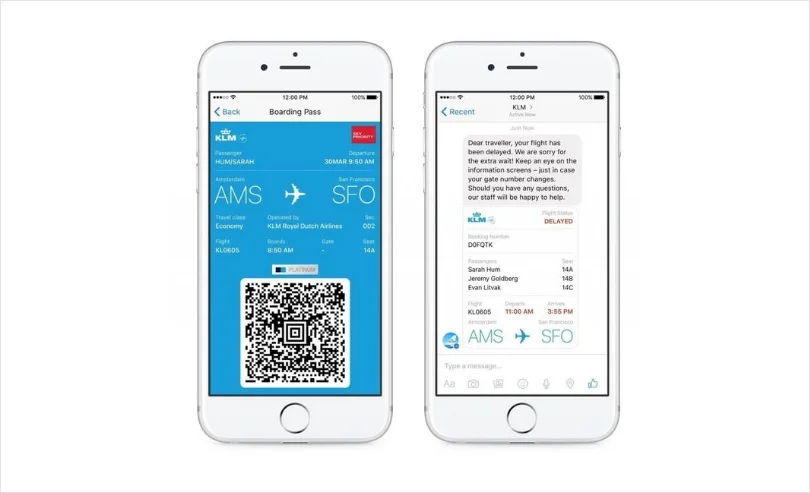
KLM Royal Dutch Airlines has a chatbot that assists its customers in getting in-depth details on a flight and helps them book one in seconds. It even allows customers to track flight status and updates them automatically in case the flight is delayed.
These chatbot marketing examples shed light on how various industries have integrated this automated virtual assistant into their support and overall business process. However, to build a marketing chatbot just like them, you need to have access to the right tips as well. Well, don’t worry. We’ve listed a few for you below.
10 Tips for an Effective Chatbot Marketing Strategy
This section aims to explore actionable chatbot development tips that’ll help you keep customers engaged with your brand.
1. A Warm Welcome Message to Capture Your Prospect’s Attention
One of the first practices that we’d recommend you follow is curating an engaging yet warm welcome message that pulls your customers right into a conversation with your chatbot.
Here’re a few examples to get started:
“Hey Mark, welcome! How can I help you today?”
“Hi Jude! It’s good to see you back. I’m here if you need any help. :)”
Quick Note: Try addressing your prospects or existing customers by their name. It will help you get their attention faster.
2. Find the Tone That Returning Visitors Could Relate To
You may find this to be a continuation of our first point, but it’s not in a way.
Your chatbot’s welcome message and its tone in the conversation should be similar. This way, you can maintain consistency and keep your customers engaged in the conversation.
While you work towards building a warm and welcoming tone for your customers, make sure to keep the conversation professional. Don’t stray away from the professional aspect of the customer service process.
Quick Note: Avoid using too many emojis to create a friendly tone for your chatbot. Also, try to write a chatbot script that sounds empathetic and helps the customer explain their challenges further.
3. Promote Your Webinars, Newsletters & Events
Have you heard of chatbots helping you sign up people for upcoming webinars or newsletters? If not, it is time to get familiarized with such functionality now.
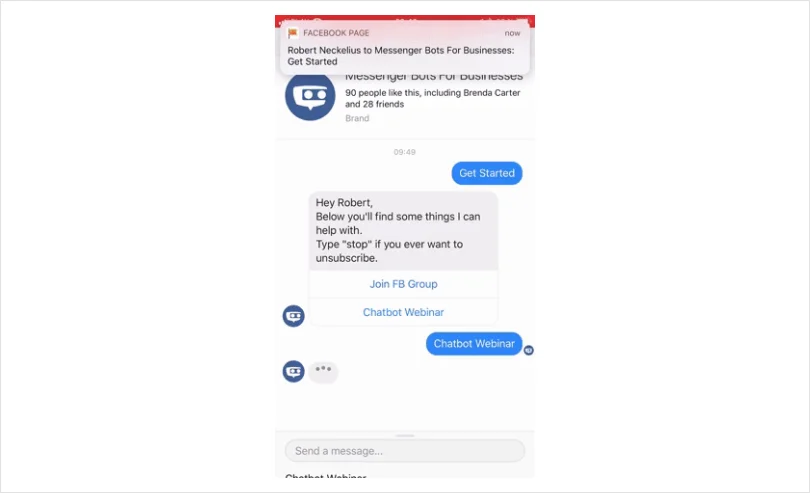
Chatbots can help you get more sign-ups for your webinars, newsletters, and upcoming events. This is one of the perfect ways to know your prospects more closely and capture more information on them in real-time.
Quick Note: When introducing courses, webinars, or newsletter sign-ups to prospects, make sure you offer more information related to the same subject. More information will encourage your prospects to attend your events and look forward to updates around them.
4. Don’t Let Your Bot Manage All Open-Ended Questions
Chatbots can ask both multiple-choice and open-ended questions to customers. However, multiple-choice questions help them identify a customer’s pain points faster. The same isn’t true in the case of open-ended questions.
Open-ended questions can leave the chatbots in a bind, therefore hampering their performance to offer a solution faster. That’s why we see many chatbots apologizing to customers during the conversation and informing them that they didn’t understand what the customer was trying to say.
In this case, we’d recommend identifying all possible open-ended questions that a customer might ask. This will help you feed the correct answers that chatbots can show during a conversation.
Quick Note: If your chatbot can’t understand your customer’s question, ensure to offer them the option to switch to a human agent. This way, you can help customers avoid repeating themselves.
5. Convert Complexities Into Tickets
Complex questions are an inevitable part of the support process, and your chatbots will come across them often. We know that chatbots can’t handle tough questions, but that doesn’t mean your customers leave without a solution.
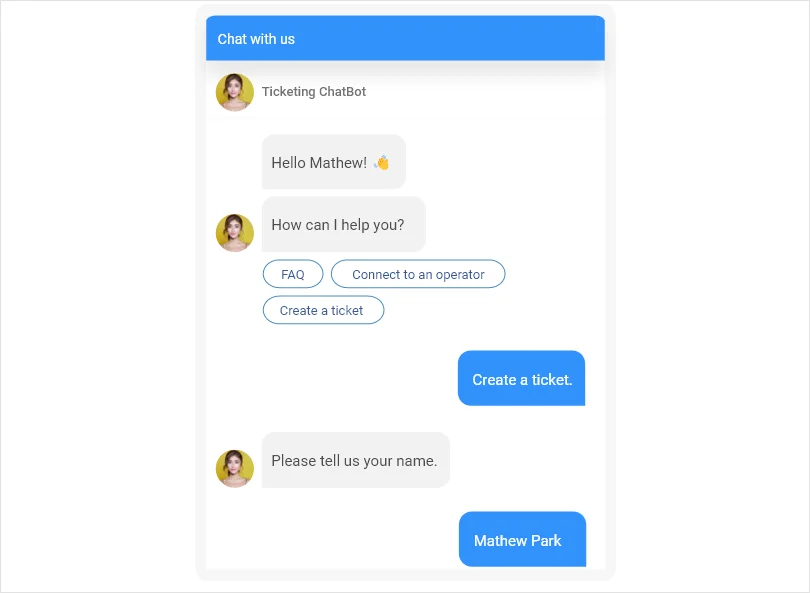
Here’s what you can do.
Build a ticketing bot that helps you create support tickets in case they can’t handle complex questions. This will help you avoid missing out on support opportunities and increase customer retention.
Quick Note: When building a ticketing bot, avoid adding questions like “Sorry, I didn’t get you. Can you repeat?”. That’s because it is a ticketing bot that will create a ticket if it doesn’t understand the question. However, do give the option between creating a ticket and answering it via FAQs to help customers save time.
6. Let Your Army of Operators Be on Standby
Chatbots are quick to respond to your customer’s incoming messages. However, they can’t answer all the questions. Still, chatbots can be great at helping customers meet the right operator who can answer their questions faster.
In addition to routing, chatbots also give online operators the freedom to intercept the conversation and assist the customer. This is a great way to reduce the response and resolution time.
Quick Note: To make routing a successful process, don’t forget to add phrases like “which department would you like to connect with?”. This will help your chatbot route the chat to the right department and reduce the resolution time significantly.
7. Build a Repository of Well-Researched Frequently Asked Questions
It doesn’t matter if your customers are planning to purchase or are already using your product; they will have questions from time to time. Some of these questions are going to be quite common for your support operators as well. But why take away their productive time when they can focus on answering complex questions.
Let your chatbot take the lead.
You can create a separate knowledge repository for some frequently asked questions and integrate it with your chatbot. This way, the chatbot can show possible answers to common questions in the form of self-help articles.
Quick Note: To build a knowledge repository, you can sit with your operators to ask what type of questions customers frequently ask. You can also visit the knowledge base’s report section to identify the standard terms people search for when finding the correct answer. This way, you can create a detailed repository that helps your chatbot to answer questions faster.
8. Keep Your Chatbot Updated by Tracking Its Performance Regularly
To improve your chatbot’s performance, you need to identify as many loopholes as possible so you can fix them regularly. That’s why keeping track of your chatbot reports is a must.
With reports, you can identify how successful your chatbot was at engaging visitors to the website. You can check when did the visitors leave the conversation or did they leave after receiving a solution. These chatbot reports equip you with a clear picture of how they perform and help you plan modifications for better output.
Quick Note: Filter out your reports to understand bot performance during a specific time. By filter we mean, understanding how many chats were valid. Identify the average amount of chats your chatbot manages daily and filter valuable conversations to identify the right pain points of your customers against the chatbot and its performance.
9. From Scheduling Meetings to Tracking Orders Engage in Every Possible Way
Your chatbot needs to multi-task. Don’t let your chatbot simply answer common questions or track orders for your customers. It needs to be an allrounder. That’s the only way you can generate more engagement with prospects and existing customers.
The more diverse your chatbot becomes in its functionalities, the easier it becomes to capture vital information on your customers. This will help you create personalized engagement experiences for your customers and encourage them to return to your brand more frequently.
Quick Note: When building a multi-purpose chatbot, make sure to have more multiple-choice questions. They will help you define a conversation path for customers and help them reach a solution faster. For example, if you run an eCommerce store, your chatbot should provide options like track order, place an order, view pricing, and so on to direct customers in the right direction and gather the correct information.
10. Ask Where Your Chatbot Can Improve
Capturing feedback is an important aspect that helps you improve the performance of your chatbot. Build a conversation flow that asks prospects and customers for their feedback and whether they found the necessary information after chatting with the bot.
You can ask open-ended questions here to get more detailed information. You can also request them to rate your chatbot’s performance between 1-5 to understand how satisfied they are with its services.
Quick Note: You can also integrate a survey maker to display detailed feedback questions. This will enable your business to identify where your chatbot lacks and how to improve for future conversations.
How to Choose the Best Chatbot for Your Business?
Selecting the right chatbot for your business can be challenging, but choosing the one that meets your specific needs is essential. To make this process easier, here are some key factors to consider:
1. Understand Your Business Needs
The first step in selecting a chatbot is understanding your business needs. Determine what tasks you want the chatbot to perform, such as answering frequently asked questions, collecting customer data, or providing product recommendations. This will help you select a chatbot tailored to your business needs.
2. Consider Your Budget
Chatbots come in various price ranges, depending on their complexity and functionality. Consider your budget and how much you are willing to invest in a chatbot. Keep in mind that a more advanced chatbot may require additional maintenance costs, so factor those into your budget as well.
3. Evaluate the Chatbot’s Capabilities
Evaluate the chatbot’s capabilities and ensure that it has the necessary features to perform the tasks you need. Some chatbots can handle more complex tasks, such as natural language processing, while others may only be able to perform basic functions.
4. Assess the User Experience
Chatbots are meant to improve the user experience, so it’s crucial to assess how easy it is for your customers to use the chatbot. Consider factors such as the chatbot’s response time, the ease of navigation, and the quality of the responses.
5. Look for Integration Options
A chatbot should integrate seamlessly with your existing systems, such as your website or social media platforms. One of the key chatbot implementation challenges is ensuring smooth integration. Look for chatbots that offer integration options, such as APIs or plugins, to overcome this challenge and streamline the implementation process.
6. Consider Technical Support
Chatbots require technical support to run smoothly like any software. Consider the level of technical support the chatbot provider provides, such as training resources, troubleshooting assistance, and maintenance services.
FREE. All Features. FOREVER!
Try our Forever FREE account with all premium features!
Boost Your Marketing Conversations with Chatbot
Want to offer fast service? Are you missing out on customers because you can’t respond to them faster? If the answer is yes, bringing in a chatbot would be the ideal solution. Chatbots can help you speed up your services and make sure that no customer leaves without an answer.
That’s not all. They even help you boost your marketing and sales efforts. In a nutshell, they can benefit your business in multiple ways. But these benefits are only possible if you implement your chatbot for marketing the right way.
To help you get started, our team came up with some essential yet powerful tips that help you set up your marketing chatbot the right way. Some of these tips encourage you to ask for feedback, build a personalized experience, add on more chatbot functionalities, and the list goes on.
If you are looking for a reliable solution to boost your chatbot marketing efforts, ProProfs Chat can help you easily achieve it. From extensive customization to detailed reports, this software has got you covered. Try your hands on this forever-free software today!
 Tips
Tips
We’d love to hear your tips & suggestions on this article!
FREE. All Features. FOREVER!
Try our Forever FREE account with all premium features!


 We'd love your feedback!
We'd love your feedback! Thanks for your feedback!
Thanks for your feedback!


